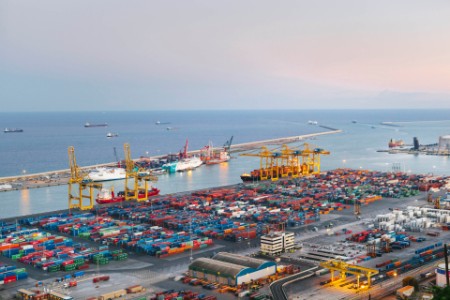Recent attacks on shipping in the Red Sea have highlighted the precariousness of global supply chains. As one of the world's most crucial shipping lanes, accounting for approximately 12-15% of total global trade, any interruption in the region even for a short period has the potential to disrupt supply chains and quickly impact both businesses and consumers.
The incidents in the Red Sea have already had far-reaching implications on the Irish, European, and global economies, resulting in delays and increased costs for goods in transit.
Businesses here in Ireland have been reporting delayed or missed delivery windows, while some have made tactical decisions to postpone their shipments for a short period. We are seeing a growing number of companies temporarily suspending shipments though the Red Sea, while an increasing number of shipping lines are diverting their vessels away from the region and around the southern tip of Africa for Asia-Europe shipping, which will have significant implications for delivery timeframes and costs.
Moreover, these disruptions have emphasised the importance of organisations diversifying their supply chains to mitigate risks and ensure continued operations, even amidst unexpected challenges.
When it comes to supply chains, the fundamental objective of every business, no matter how big or how small, is the synchronisation of their supply capability to their customer demand, thereby ensuring the right product in the right place at the right time.
A key challenge is what strategy to employ to deliver that synchronisation.
Beginning in the 1980s, for several decades most supply chains have deployed lean, “just-in-time” strategies, lean in terms of both cost and working capital. Furthermore, during those same decades, China and the wider Far East was establishing itself as the “world’s manufacturer.”
All of this has led to the establishment of well honed, lean, albeit long lead-time, supply chains, operating fundamentally East to West. These helped to balance demand and supply globally – while simultaneously helping to drive down costs for many goods – and function effectively for decades in a stable global economy.
However, macro events, as we have experienced in the last couple of years, are the opposite of stable.
Shocks to the supply chain system
Considered in supply chain terms, we have witnessed a series of shocks to the supply chain system due to unpredictability since 2020. On the demand side, the COVID-19 pandemic caused the greatest disruption in over three decades. Concurrently, events such as the Ever Given Suez Canal blockage, as well as geopolitical tensions like the Russia/Ukraine conflict, resulted in unparalleled supply shocks. The ongoing disruptions in the Red Sea further compound these challenges, underscoring the instability our global supply chains face at present.
The impact of such sudden misalignment can be, overstock or understock, situations leading to significant financial losses for businesses. Furthermore, delayed deliveries and inconsistent supplies can harm customer relationships, tarnish a company’s reputation, and result in loss of market share.
The question therefore is if businesses and their supply chains are truly learning from these events and adapting to such shocks? The simple answer is yes.
However, similar to turning an oil tanker, this can take an awful long time.
Businesses need to re-engineer decade-long established supply chains structures and to do this they are focusing on three core strategies.
Firstly, “near-shoring” of supply capacity, namely the notion of relocating supply capability nearer to the market it directly serves.
Secondly, inventory regionalisation strategies, specifically establishing regional stocking of goods to protect against any impacts upon long lead times through the creation of “buffer stocks.”
Thirdly, companies are seeking to build a broader supplier base to mitigate risk and improve efficiency.
Based on survey responses in March 2022 from companies based in Germany, France, Spain, Italy, and the UK, the extent of operational relocation among European industrial players is similar to the US, with 55% saying they have engaged in near- or re-shoring in the last 24 months. European respondents were also likely to have made supplier base changes, with 61% saying they had done so in the last 24 months.
The transformation of a supply chain however requires significant time, careful planning, and strategic execution. Regardless of whether a company is seeking to nearshore, regionalise its inventory or diversify its supplier base, each element needs careful consideration and design to ensure it suits the unique requirements of each business.
So, while supply chain transformation promises substantial long-term benefits, it’s important to understand that it is not an instantaneous process.
While it is still too early to say how things will develop in the Red Sea over the coming weeks and months, the situation remains volatile and one that businesses and world leaders are watching carefully.
One thing is clear, however, and that is the sooner calm is restored the better for all concerned.
(The article was originally published in the Irish Examiner on 22 January as Red Sea reminds us once again of the fragility of the global supply chain)


